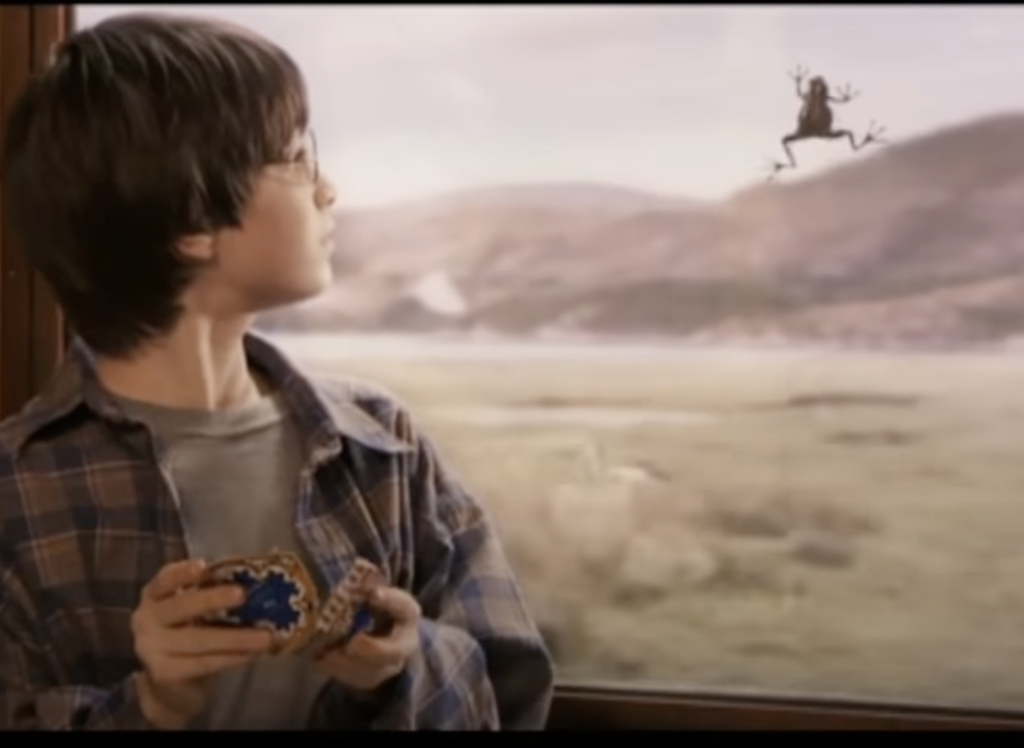
Remember the scene in Harry Potter and the Sorcerer’s Stone where Harry and Ron indulge in magical, jumping chocolate frogs on the train to Hogwarts?
Scientists have just discovered the next best thing – although they probably wouldn’t recommend eating one!
This tiny ‘chocolate’ colored frog was only discovered when biologists in the Amazon heard its unique ‘beep’ sound coming from underground.
The burrowing species of frog is around 6cm long and its skin is a unique dark, brown colour – probably as a means of camouflage.
While the Peruvian locals knew about the elusive little creature, biologists had until now been unable to find one to study or name.

Combing the nutrient-rich wetlands of the Peruvian jungle at night – when frogs are most active – the chocolate frog remained a no-show for the scientists. After an unsuccessful search of the jungle floor, the biologists decided to dig into the boggy ground when they heard the frog’s unusual ‘beeping’ noise coming from under the earth.
Around 20 minutes into the dig, biologists were finally able to officially name the species ‘Synapturanus denta’, presumably in reference to the frog’s unique, long, pointed nose. ‘Denta’ is the Spanish word for ‘tapir’ which is a small pig-like mammal with a snout similar to an elephant’s trunk.
Synapturanus danta • A Needle in A Haystack: Integrative Taxonomy reveals the Existence of A New Small Species of Fossorial Frog (Anura, Microhylidae) from the vast lower Putumayo Basin, Peru – https://t.co/pzYD8gTVjo pic.twitter.com/rzojsHZ2vi
— AHE (@herpetologica) February 17, 2022
Scientists say its small, point shape could help its movement through the soft ground of the peatlands:
“Its body shape and general look seems to be adapted to the soft soil of the peatland, rather than the robust and wider shape of species in other environments”, said Dr Germán Chávez, a researcher at Peru’s Institute of Herpetology.
Researchers have suggested the abundance of the species in Peru’s Putumay Basin could indicate the area is ecological healthy and thriving, probably due to the considerable lack of deforestation in the area.
Year on year, new species are continually found, with 70 new plants and animals discovered in 2021 alone.
“It’s an example of the Amazon’s hidden diversity, and it’s important to document it to understand how important the ecosystem functions”, said Dr Michelle Thompson, a researcher and ecologist at the Field Museum of Natural History.
“These frogs are really hard to find, and that leads to them being understudied.
“The frogs are tiny, about the size of a quarter, they’re brown, they’re underground, and they’re quick.
“You know these little frogs are somewhere underground, but you just don’t see them hopping around.
“We could hear them underground, going beep-beep-beep, and we’d stop, turn off our lights, and dig around, and then listen for it again.
“After a few hours, one hopped out of his little burrow, and we were screaming, ‘Somebody grab it.’”
While the tiny chocolate frog was abundant in the damp peatlands, the researchers concluded that its shape and structure is probably not very well adapted for life in the dry-lands:
“First, we have to confirm whether it’s restricted to this habitat, but its body adaptations seem to point in that direction”, explained Dr Chávez.
“For instance, if the habitat is too dry, the soil would become too hard for a non-robust frog like this one to dig.
“This would leave our frog with far fewer chances to find a shelter and eventually, it would be hunted by a bigger predator.
“So I think the possibilities that this frog would be a wetlands specialist are high, but still need to go further in this research to confirm it.”
This story syndicated with permission from My Faith News